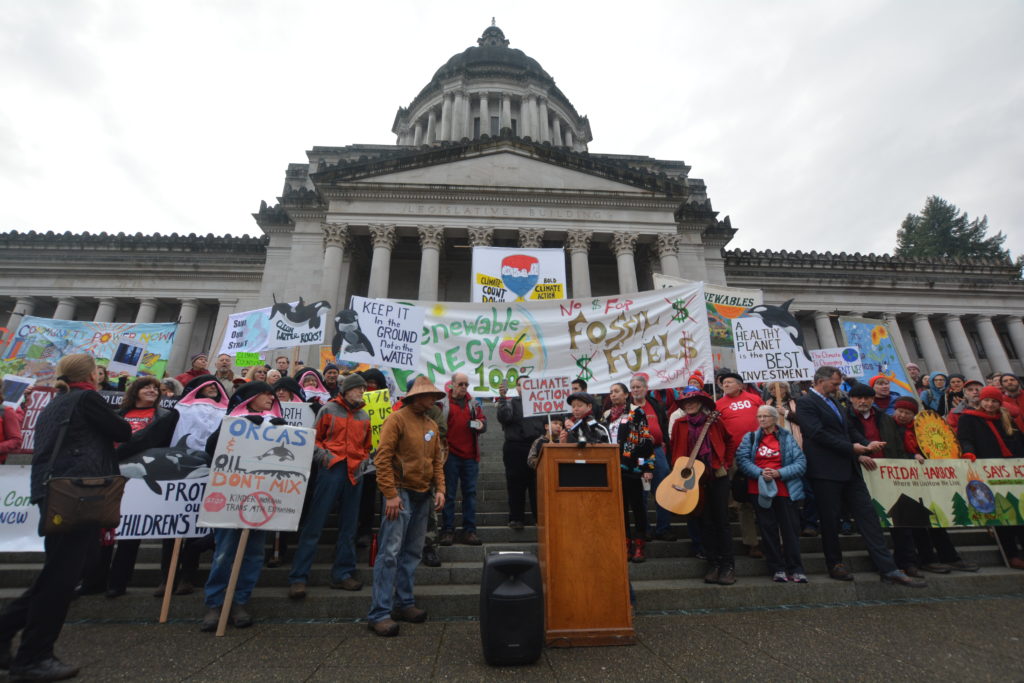In the predawn darkness of January 8, 2018, two trucks pulled up in front of the state capitol building in Olympia, Washington. Within minutes, four teepee-like “tarpees” were erected by indigenous and affiliated activists on the lawn at the base of the capitol steps. Each tarpee sported an activist perched at its top, ten feet off the ground.
It was opening day of the 2018, 60-day legislative session, and environmental and Indigenous rights advocates began to arrive. They were there to urge legislators and Governor Jay Inslee to act on carbon emissions, to promote sustainable energy, and to draw attention to land and water rights of Indigenous people. The issues merge in Tacoma with Puget Sound Energy’s ongoing construction of an unneeded liquid natural gas refinery, with an 8 million gallon storage tank. Construction is taking place on land belonging to the Puyallup Tribe, with ownership established by the 1854 Medicine Creek Treaty.
By 9 a.m., a reception tent, food tables and signup sheets for legislative visits were in place. The sounds of drumming and singing, led by Indigenous people, filled the air. People from around the state gathered, sporting signs, banners and even a huge globe and an inflatable oil pipeline. Old friendships were renewed and new ones formed.

By 10 a.m., people were meeting with their legislators, Indigenous leaders were meeting with members of Governor Inslee’s staff, and a podium and microphone were set up at the foot of the capitol steps for speakers. It was during the day, on a work day, in Olympia and several hundred people from around the state were making their feelings heard. By noon, spectator galleries in the House and Senate chambers were packed with demonstrators. New legislators were sworn in and the rituals of opening day proceeded, all under the watchful eyes of red clad activists. As the afternoon progressed, the drumming and singing continued on the capitol steps, more speeches were made, and then goodbyes and blessings were expressed as people drifted away. After a “negotiated settlement,” three of the four tarpees came down.
The day was a fine example of people from various places, with common concerns but differing areas of emphasis, working together, giving up for a day their normal routines and obligations, each one doing what they could to further causes they cared about. At dusk, one tarpee remained, occupied by seven Indigenous women who refused to leave tribal land. From dawn to dusk (and, as it turned out, on into the night) activists staked out their territory in Olympia.
For people around the state, this was the first of 60 days of activism focused on the state legislature and the governor to address climate crisis, respond to the the crisis, and acknowledge the ancestral tribal land of the Nisqually tribe upon which the capitol, and all state buildings are erected.

